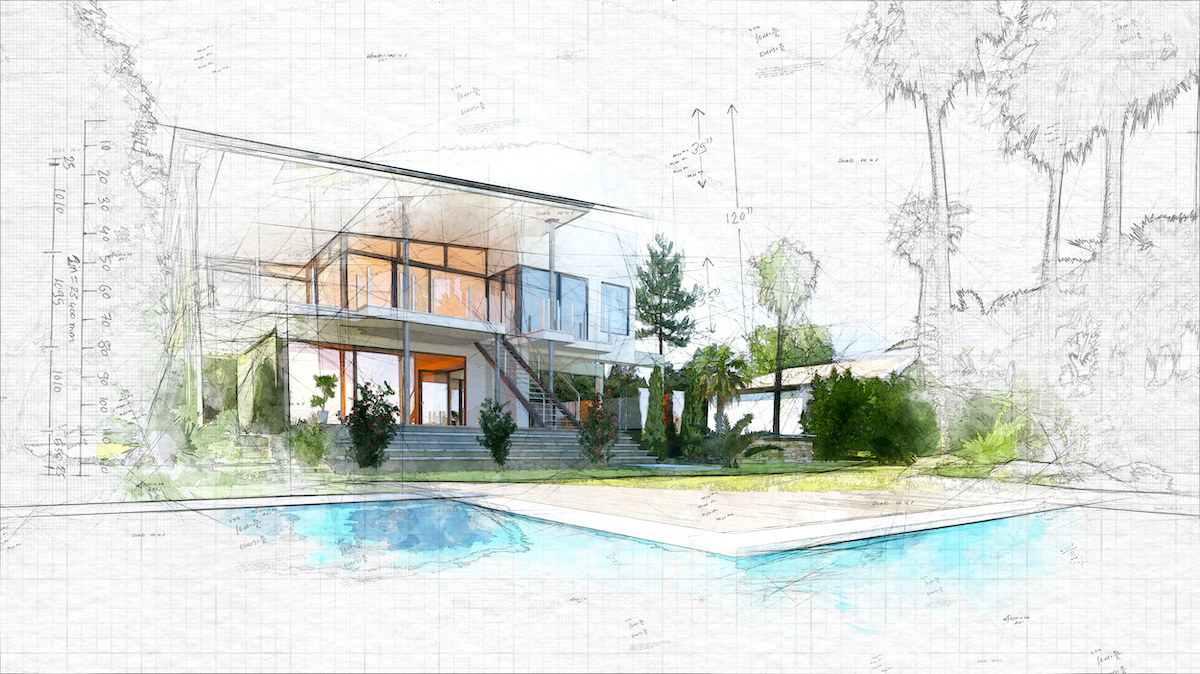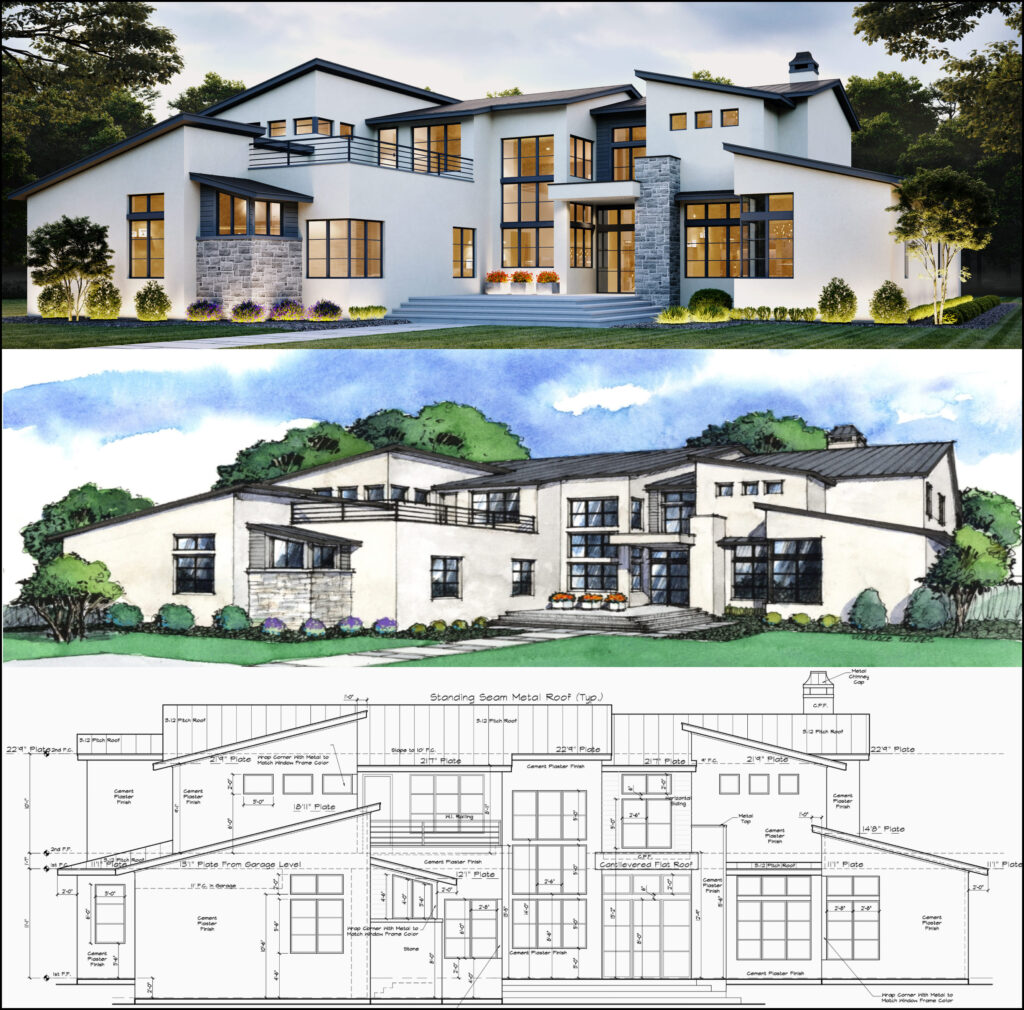The Effect of Technical Developments on the Style Practices of Contemporary Architects
The rapid advancement of technological tools has actually substantially reshaped the style landscape for modern designers, fostering extraordinary degrees of advancement and sustainability. The integration of Structure Details Modeling (BIM), parametric style, and man-made intelligence has not only streamlined partnership among varied groups however likewise redefined project implementation. Nevertheless, as architects accept these developments, they are confronted with complex challenges that might affect their creative procedures. Checking out these characteristics discloses a nuanced interplay in between innovation and traditional layout approaches, triggering a more detailed assessment of what the future holds for building practices.
Advancement of Architectural Tools
Just how have building tools changed the layout and construction processes over the centuries? The evolution of architectural devices has actually dramatically impacted the effectiveness, precision, and creative thinking of design and building and construction.
With the advent of the Renaissance, the intro of the compass and the protractor noted a pivotal change. These tools made it possible for designers to attain higher precision in their layouts, helping with the appearance of even more detailed and proportional structures. The Industrial Change better changed building experiment the intro of mechanized devices and products, permitting for larger and a lot more enthusiastic tasks.
In the 20th century, the development of computer-aided design (CAD) software program transformed the landscape once more, offering architects with unprecedented capabilities in modeling and visualization. Today, progressed devices such as Structure Information Modeling (BIM) and parametric style software application continue to press the limits of building technology, making it possible for an extra integrated technique to design and building and construction processes.
Boosted Cooperation in Design
As modern technology continues to progress, boosted cooperation in layout has actually ended up being a keystone of contemporary architectural method. The combination of electronic devices such as Structure Information Modeling (BIM), cloud-based platforms, and progressed visualization software has actually transformed the way designers, designers, and stakeholders interact throughout the design procedure. These devices promote real-time communication, enabling teams to share concepts, adjustments, and feedback instantly, no matter of geographical location.

In addition, interdisciplinary cooperation has been structured through these technical developments, making it possible for engineers to work extra closely with other experts, such as metropolitan planners and ecological experts. The result is a more cohesive strategy to create that thinks about various viewpoints and expertise. Inevitably, enhanced collaboration in layout is not merely a pattern; it is crucial for creating innovative, visit this web-site practical, and aesthetically pleasing architecture in an increasingly complex world.
Sustainability Through Modern Technology
Sustainability in design has significantly ended up being linked with technical development, driving the market toward ecologically liable practices - cda architects. Contemporary designers are leveraging This Site sophisticated technologies to reduce environmental influence while boosting the efficiency of buildings. One prominent example is making use of Structure Details Modeling (BIM), which permits accurate preparation and source allocation, minimizing waste throughout building and promoting power efficiency throughout a building's lifecycle
In addition, smart materials and energy-efficient systems are being integrated right into styles to maximize source usage. Technologies such as solar cells and green roofing systems harness renewable resource resources, contributing to lowered carbon impacts. Furthermore, the application of expert system in layout processes allows architects to mimic and evaluate power usage, assisting decisions towards even more lasting outcomes.
The assimilation of lasting modern technologies not just straightens with international environmental objectives however also fulfills a raising need from consumers for environmentally friendly options. As designers embrace these innovations, the focus shifts towards developing spaces that are not only visually pleasing but also functionally sustainable, thereby redefining the criteria of modern-day style. This way, innovation works as a stimulant for sustainability, allowing architects to make structures that regard and improve the natural surroundings.
Challenges in Execution
While technological developments in style hold excellent promise for enhancing sustainability, their execution typically experiences significant challenges - cda architects. One main barrier is the steep understanding curve related to new technologies. Designers and construction specialists may need substantial training to properly use advanced software program and devices, which can postpone job timelines and raise costs
Additionally, the combination of emerging innovations, such as Structure Details Modeling (BIM) and sustainable materials, usually requires cooperation across multidisciplinary teams. This partnership can be hindered by distinctions in know-how, operations, and interaction designs, leading to potential disputes and inefficiencies.
Financial constraints better complicate the fostering of innovative modern technologies. Numerous architectural companies, especially smaller sized ones, might lack the read this post here sources to buy innovative tools, restricting their capacity to contend with bigger companies that can pay for such financial investments.
In addition, regulatory frameworks and structure codes may not equal technical developments, producing obscurity and potential conformity problems. This difficulty can prevent architects from completely embracing brand-new technologies, as the threat of non-compliance might outweigh the advantages. Dealing with these application obstacles is important for the successful assimilation of technical developments in contemporary building practices.
Future Fads in Design
The difficulties related to the implementation of brand-new innovations in style have prompted a reevaluation of future trends within the market. As engineers navigate concerns such as sustainability, urbanization, and social equity, they are progressively taking on cutting-edge modern technologies to boost style effectiveness and environmental efficiency.
One prominent trend is the integration of man-made intelligence (AI) in the design procedure. AI tools can examine substantial datasets to notify design decisions, boosting both creativity and performance. In A Similar Way, Building Info Modeling (BIM) remains to advance, enabling real-time cooperation amongst stakeholders and helping with structured task administration.
Lasting layout techniques are additionally obtaining energy, with designers concentrating on adaptive reuse and regenerative layout concepts that reduce source consumption and waste. The incorporation of clever products and renewable power sources will certainly additionally enhance the durability of buildings despite climate change.

Conclusion
Technological innovations have actually significantly improved architectural style methods, facilitating improved precision, cooperation, and sustainability. The combination of devices such as Building Information Modeling and parametric design software program, along with man-made knowledge and smart materials, empowers engineers to deal with complex difficulties extra effectively.